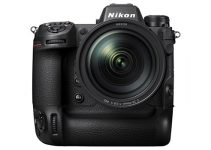Gimbal stabilizers are typically regarded as one of the most intuitive pieces of film equipment these days.
Through the seamless integration of different hardware and software technologies, there’s no denying that these devices are much easier to setup than traditional counterbalance-based stabilizers.
Despite the simplicity of using a gimbal, however, some fine-tuning is almost always required to get the best results.
That being said, you may consider adjusting one particular setting in your camera to instantly improve any gimbal shot – your frame rate. Here’s what you can expect as a result.
As filmmaker Daniel Schiffer explains in his video, gimbal shots can be improved by capturing your footage at 30 frames per second while editing the very same video at 24fps later on. As you might have guessed already, the practice of shooting at a higher frame rate than your editing sequence has several benefits.
In the first place, editing 30fps footage on a 24fps timeline allows you to slow down the speed slightly in post. This slower motion seems to be subtle enough to disguise most unwanted bumps, jitters, and robotic movements as a consequence of the speed change.
In addition to the removal of undesirable artifacts, the slower motion adds a dreamy and whimsical flow to the video. This is perfect for showcasing your subject as the extended clip duration can also immerse your audience further by drawing their attention to the desired direction.
Lastly, the difference in frame rates makes shooting slow-motion in low light more efficient. Traditional slow motion requires you to film at higher frame rates and shutter speeds, thus reducing the amount of light hitting the camera sensor, resulting in noiser footage.
With the technique outlined by Schiffer, you can shoot at 30fps with a common shutter speed such as 1/60. Afterward, you’ll be able to slow down the footage accordingly to achieve this pleasing slow-motion effect. Of course, the speed of the motion captured using the above method can’t match the footage shot at higher frame rates. Nevertheless, for those looking for a quick and effective way to smooth out their gimbal shots, this trick is definitely worth considering.
[source: Daniel Schiffer]
Disclaimer: As an Amazon Associate partner and participant in B&H and Adorama Affiliate programmes, we earn a small comission from each purchase made through the affiliate links listed above at no additional cost to you.



